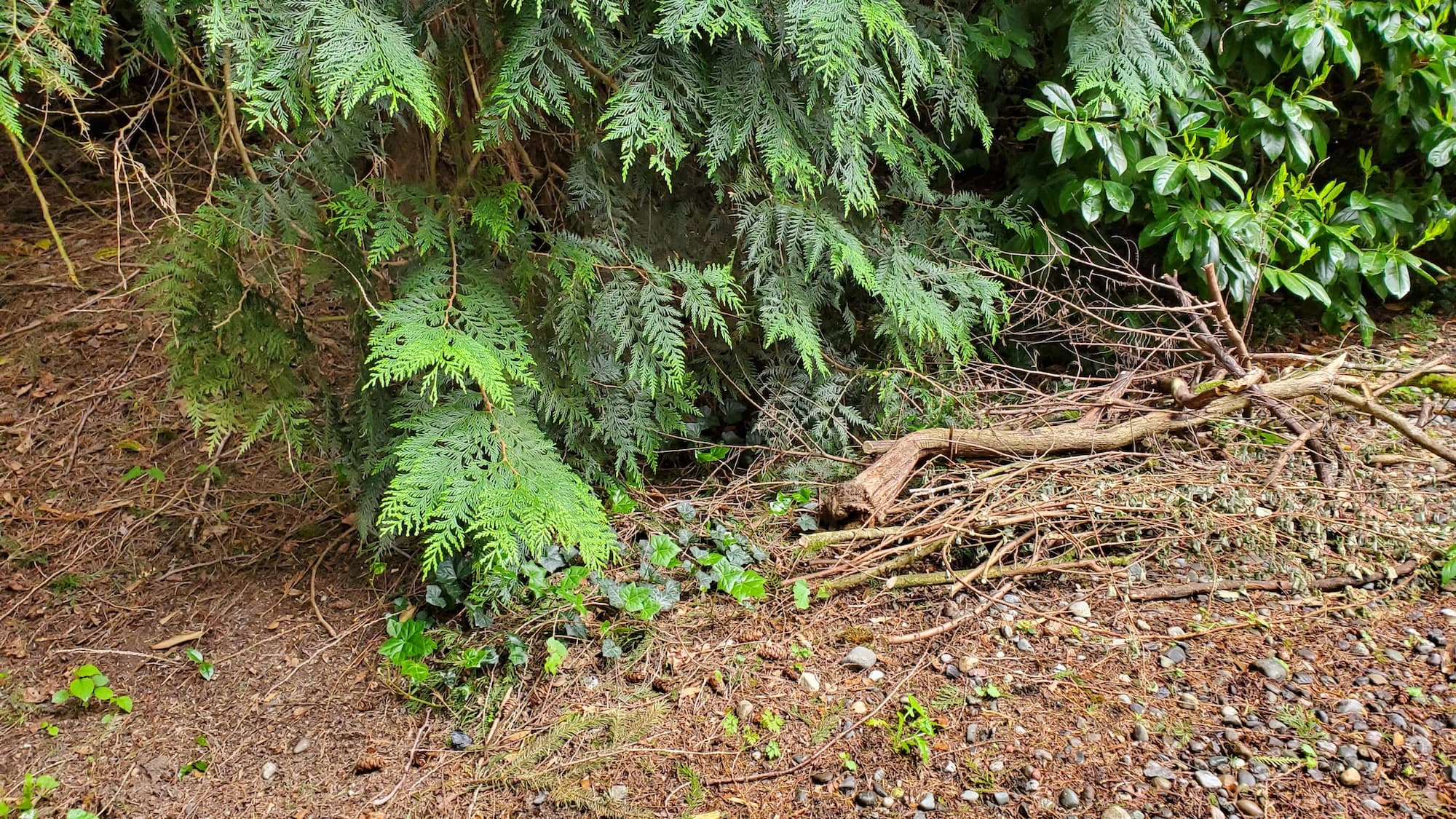West Seattle Young Fruit Tree Removal
Homeowner’s Issue
Young fruit trees often arrive as a good idea but quickly become a maintenance burden in West Seattle’s unique conditions. Our neighborhood gets frequent winter rain, shaded microclimates under big evergreens, and heavy moss pressure on lawns—especially near Lincoln Park and the shady hollows around Admiral. Many yards sit on compacted glacial till or pockets of clay that stunt roots; others are on slopes where roots destabilize terraces or clog drains. Near Alki and the shoreline, salt spray and wind exposure can stress tender fruit varieties and reduce yields.
Common problems: poorly placed trees that block views or driveways, suckering root systems that invade beds, disease from constant dampness, and fruit drop that attracts pests. HOA expectations in some pockets (High Point, West Seattle Junction) favor tidy beds; unmanaged young trees can hurt curb appeal. Homeowners also face seasonal constraints—heavy equipment tears up yards during our wet winters, and summer drought means newly planted replacements need focused irrigation. We remove trees with an eye toward local soil, slope, drainage, and sustainable disposal—no herbicides, only mechanical and organic methods—to leave you with a practical, low-maintenance yard ready for its next use.
Our Quality Service
We remove young fruit trees with professional, sustainable methods suited to West Seattle yards. We assess placement, root spread, and nearby structures, then choose hand tools, chainsaws, or a stump grinder as needed. For small jobs we typically finish in a few hours; multi-tree or steep-site work can take a half- to full-day.
Local insight: we avoid heavy machinery in the rainy season to protect turf and drainage. We know which root systems will re-sprout in this climate and remove them mechanically or grind stumps down to prevent regrowth. All green waste is chipped for mulch or taken to appropriate compost facilities; no herbicides are used. Benefits include improved sightlines, reduced pest attractants, safer yards on slopes, and simpler long-term maintenance.
What’s Included
- On-site assessment and removal plan
- Safe felling and limb removal (machine or hand methods)
- Stump grinding (optional; recommended for prevention of suckers)
- Chipping of branches and on-site distribution as mulch or haul-away
- Site clean-up and basic soil/grade leveling
- Brief follow-up care notes for replanting or turf repair
Options / Upgrades:
- Full stump removal vs. grinding
- Replanting with site-appropriate, low-maintenance trees/shrubs
- Mulch + biodegradable fabric for new beds
- Organic, non-chemical weed control and hand weeding
- Haul-away to landfill vs. Seattle Public Utilities green-bin or compost facility drop-off
Before & After / Expectations
- Noise and mess: chainsaws, grinders, and a chipper are part of the job; expect 2–4 hours for most single-tree jobs and longer for multiple trees.
- Access: we need a clear drive or parking close to the yard; expect us to protect lawns and driveways with plywood when needed.
- Debris: we chip most branches on-site; chips can be left as mulch or hauled away based on your choice.
- Ground: stump grinding leaves a hole/backfill requirement; we can level and add topsoil if requested.
- Timing: avoid scheduling heavy equipment during the wettest months; summer and early fall give the cleanest results.
Care tips after removal: - Replant in fall for best root establishment, or mid-spring if you prefer.
- Water new plantings during summer drought windows (deep soak every 7–10 days for the first season).
- Watch for ivy or blackberry regrowth on exposed soil; hand-pull or mulch heavily to suppress.
FAQs
Q: Do you use herbicides to prevent stump regrowth?
A: No. We use mechanical grinding and follow-up manual removal or mulching. No herbicides.
Q: How long does a typical young tree removal take?
A: Small trees are often done in 1–3 hours. Stump grinding or multiple trees can take half a day or more.
Q: Do I need a permit?
A: Most young fruit trees on private property don’t need city permits. If the tree is in a public right-of-way or is a designated protected tree, we check and advise.
Q: What happens to the green waste?
A: We chip onsite for mulch or transport to compost facilities; you can choose Seattle Public Utilities green-bin options or haul-away.
Q: Can you help replant after removal?
A: Yes—we recommend species suited to West Seattle microclimates and will prepare soil and mulch for best establishment.
Call to Action
Ready to reclaim your yard in West Seattle? Book a quick, no-surprise estimate and get a practical removal plan that respects soil, slope, and rainy-season timing. Fast scheduling, sustainable methods, and local experience—trusted by neighbors from Alki to Fauntleroy.
Email: neatandtidyseattle@gmail.com










